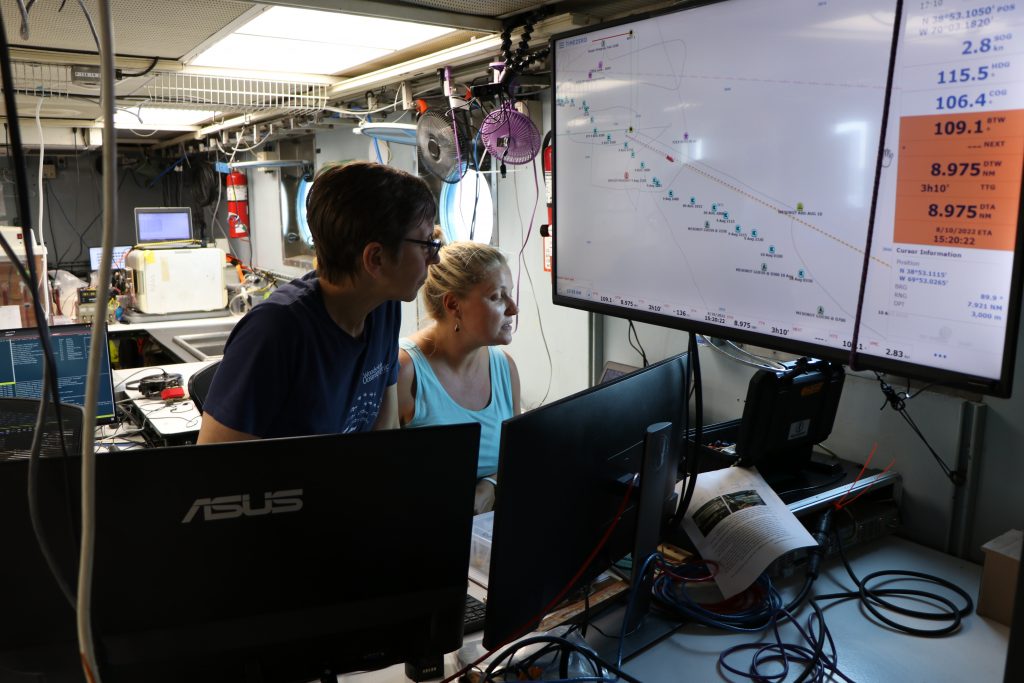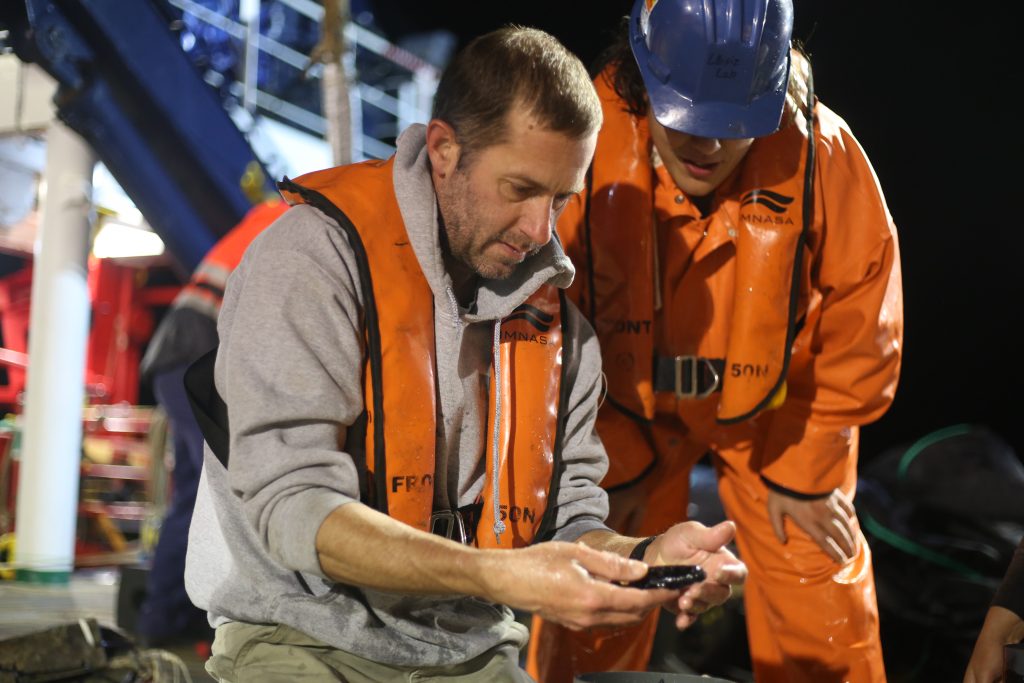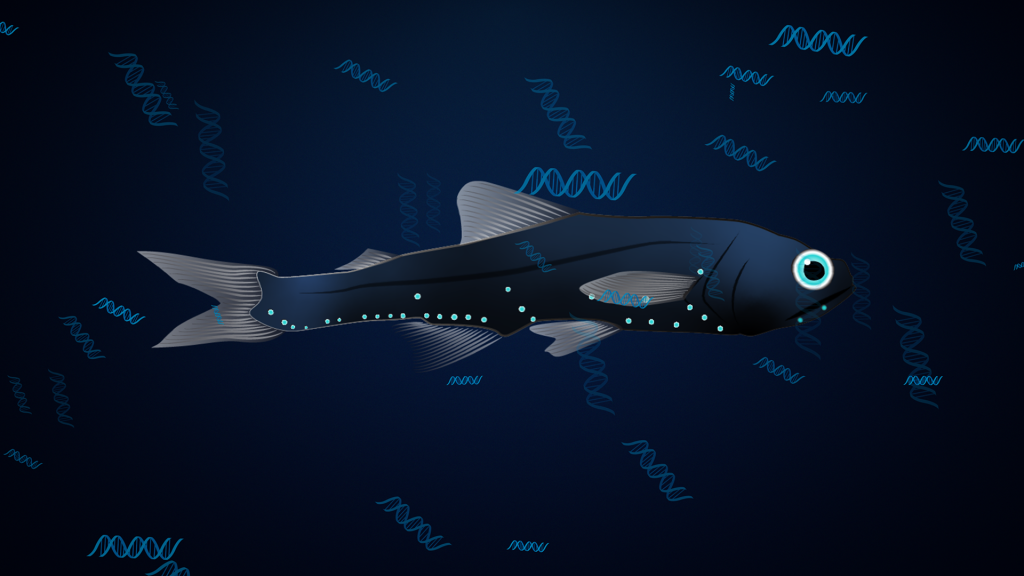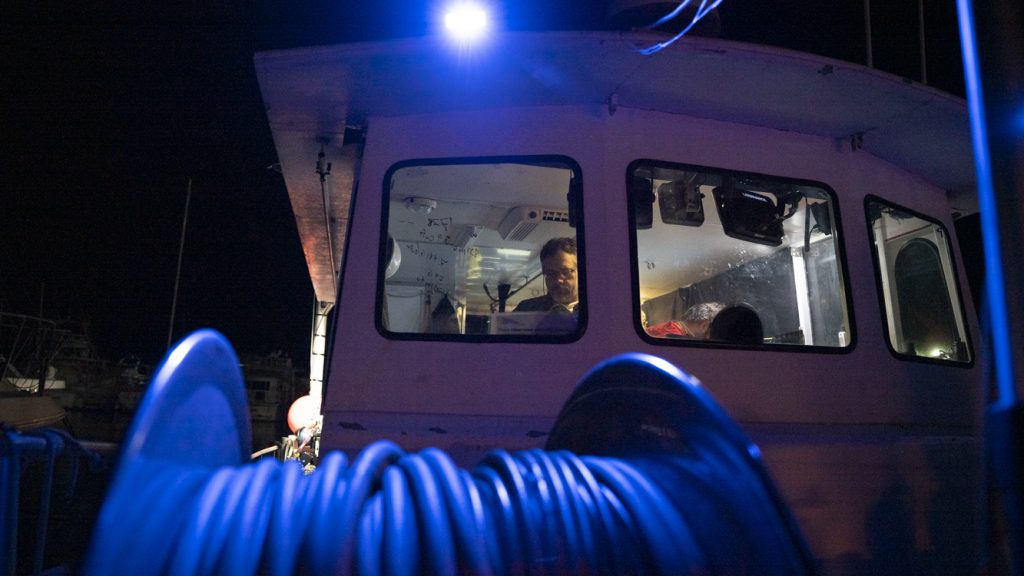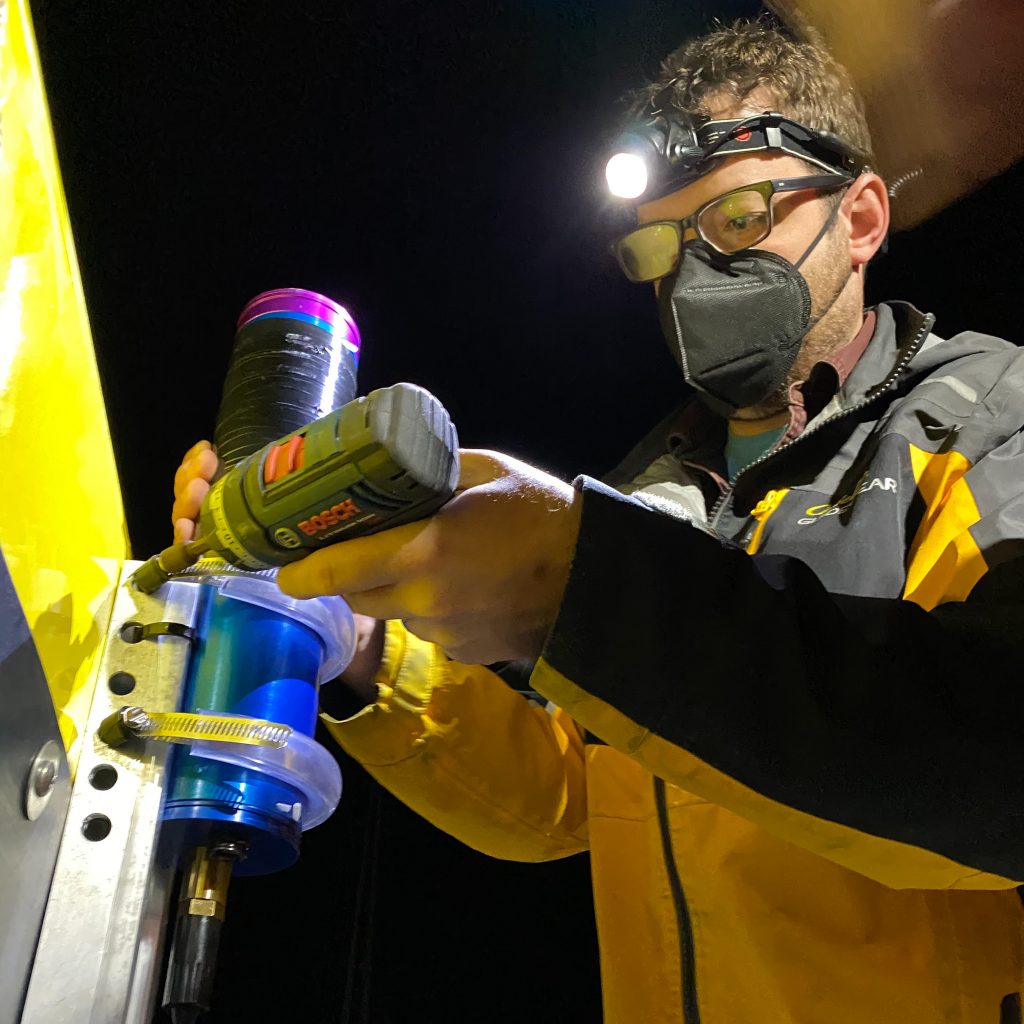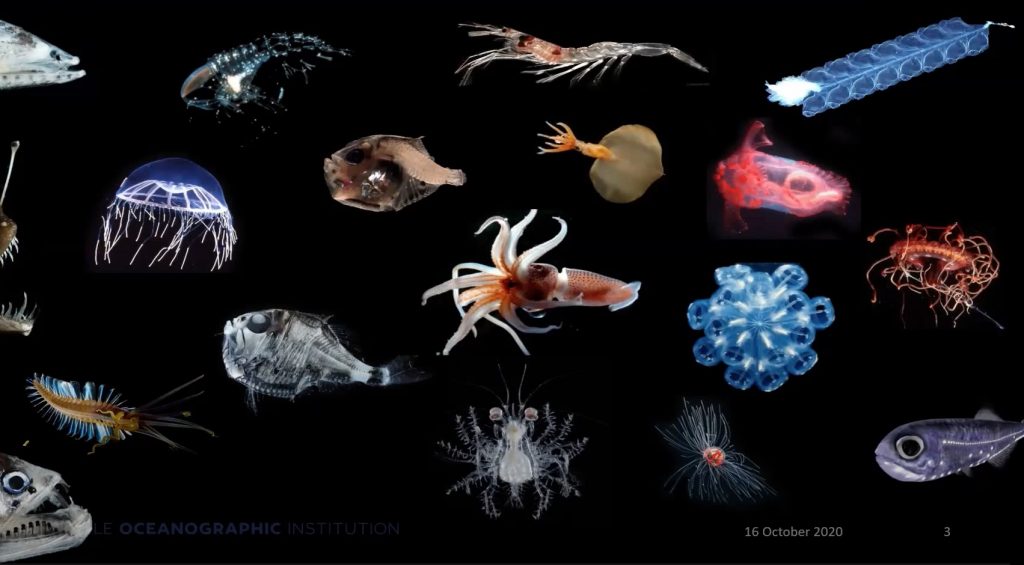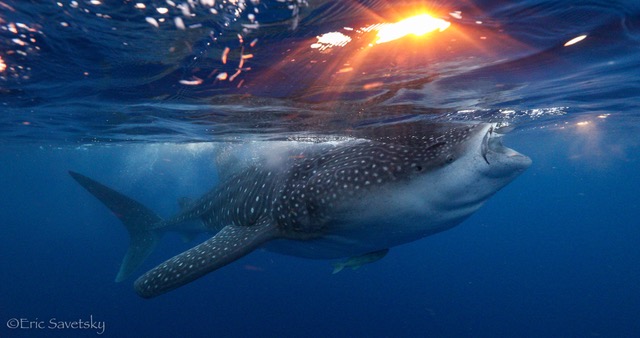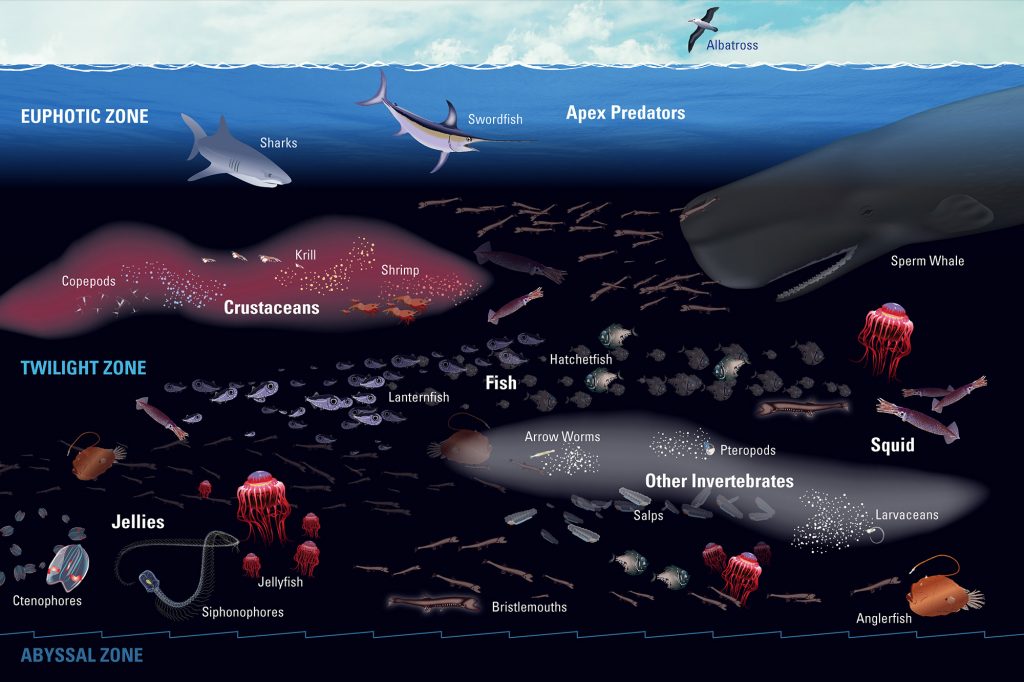Life
Where Does the Carbon Go?
Following the trail of marine snow with members of WHOI’s Café Thorium By Elise Hugus MIT-WHOI Joint Program Student Samantha…
Read MoreField Notes: Unraveling the mysteries of migration with simultaneous sampling
OTZ project lead Heidi Sosik and WHOI senior research assistant Taylor Crockford review data coming in from the towed sled…
Read MoreGut Instinct
OTZ researcher Joel Llopiz (Left) examines a fish from the twilight zone during a net tow in 2021. The twilight…
Read MoreEnvironmental DNA is a reliable way to learn about migration from the twilight zone
Woods Hole, MA — The mid-ocean “twilight zone” holds the key to several tantalizing questions about the marine food web…
Read MoreCounting fish—with sound
Acoustic measurements from a ship and an underwater robot help scientists estimate how many fish are in the twilight zone.…
Read MoreField Notes: Hunting an Isolume
Captain David Ullman preps Catapult for a 2:30am departure. (Photo: Jennifer Berglund) Today, the team set out well before sunrise,…
Read MoreField Notes: Catching Light
Research Technician Fredrick Marin attaches a highly-sensitive radiometer to Mesobot. Credit: Jennifer Berglund Since Mesobot arrived in Bermuda, it’s been…
Read MoreUpdate: OTZ Biomass
What is biomass, and why is it so important for understanding the ocean twilight zone? In order to fully understand…
Read MoreWhale Sharks Forage in the OTZ
New data suggests that whale sharks, like blue sharks and white sharks, dive thousands of feet down into the twilight zone to feed.
Read MoreUpdate: OTZ Food Webs
One of the key ways our team is working to understand the ocean twilight zone is by studying its complex food webs.
Read More







